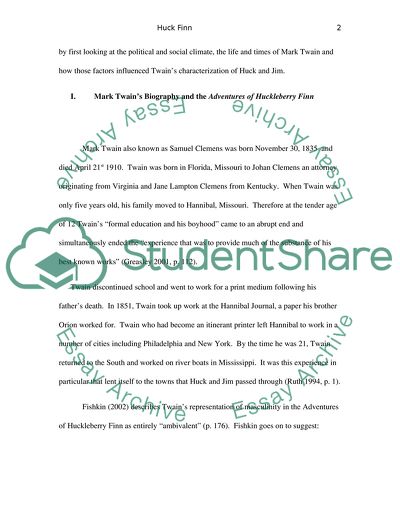Cite this document
(“The Adventures of Huckleberry Finn by Mark Twain Research Paper - 1”, n.d.)
The Adventures of Huckleberry Finn by Mark Twain Research Paper - 1. Retrieved from https://studentshare.org/literature/1744249-the-adventures-of-huckleberry-finn-by-mark-twain
The Adventures of Huckleberry Finn by Mark Twain Research Paper - 1. Retrieved from https://studentshare.org/literature/1744249-the-adventures-of-huckleberry-finn-by-mark-twain
(The Adventures of Huckleberry Finn by Mark Twain Research Paper - 1)
The Adventures of Huckleberry Finn by Mark Twain Research Paper - 1. https://studentshare.org/literature/1744249-the-adventures-of-huckleberry-finn-by-mark-twain.
The Adventures of Huckleberry Finn by Mark Twain Research Paper - 1. https://studentshare.org/literature/1744249-the-adventures-of-huckleberry-finn-by-mark-twain.
“The Adventures of Huckleberry Finn by Mark Twain Research Paper - 1”, n.d. https://studentshare.org/literature/1744249-the-adventures-of-huckleberry-finn-by-mark-twain.


